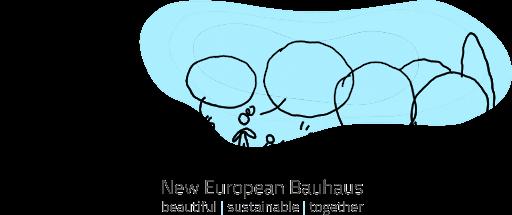
7 minute read
BEST PRACTICES: THE CITIES OF THE FUTURE ARE ALREADY HERE
3.1 Vision and strategy
The communities analyzed and studied have a clear vision that brings them to the fulfillment of the sustainability goals proposed by the United Nations. These communities have a strategic plan that defines the plans and means to advance the implementation of specific sustainability goals and objectives, especially in the three areas of environment, economy, and sociocultural characteristics. Communities establish and maintain systems that allow assessment of progress in achieving the sustainability goals and are accessible to community members and other stakeholders. An example of excellence in this case is the "Sustainable City" of Dubai which keeps track of its own environmentally friendly progress with constant monitoring of consumption and emissions of the city itself.
Video Sustainable City - YoutTube
3.2 COMMUNITY AND SOCIO-CULTURAL DIMENSION
By now, it is clear that restarting with a sense of community is critical for any area that wants to begin a regeneration process. Residents and stakeholders of the cities studied are enabled to create a healthy and livable community through their direct involvement. They actively participate in community life, thus creating a common identity. In this new identity, the various social and cultural contexts are clearly recognized and included. The community of the town of Sciacca in the province of Agrigento has understood this very well and has created the Widespread Museum of the 5 Senses. This project stems from a pact that the community of Sciacca made to get out of a period of crisis and begin to promote the identities of the area that become resources of an entire community. From the Community Pact was born the Community Cooperative "Identity and Beauty" with the aim of ensuring METHOD, GOVERNANCE, and SKILLS to support the citizens of Sciacca in the processes of enhancement and promotion of historical, artistic, cultural, and gastronomic heritage. The community cooperative accompanies citizens in offering quality tourism and hospitality through professional coordination, specific skills, and training.
Sito del Comune di Sciacca
This change of perspective and the rediscovery of our territory aim to create opportunities for development and sustainable growth for an entire territory. Or again the case of the municipality of Malegno, in the province of Brescia, where a real educating community was born via a group committed to ensuring the growth of young people especially in remote places or with apparently few opportunities. This initiative has guaranteed Malegno the Cresco Award as Italy's First Most Sustainable Municipality in 2020.
3.3 ENVIRONMENTAL REGENERATION
Sito del Comune di Malengo
From territories for territories, regenerating starting from local identity and resources. This is the fundamental point of environmental regeneration. The communities identified incorporate energy systems that improve energy efficiency and rely on energy from renewable sources. This is the case of the municipality of Ostana, in the province of Cuneo, where there is a widespread and shared policy of recovering ancient mountain buildings with a focus on sustainability. In addition to the enhancement of Occitan culture and tourism, Ostana has focused on the recovery of land for agricultural purposes and primary resettlement, with attention to social inclusion.
The communities identified incorporate water management systems that reduce water loss and increase water use efficiency: this is what we will see with our Pollica example. Solid waste management that reduces waste generation and increases reuse, recycling, and environmentally responsible disposal is also a key part of these best practices. Not least, the community pursues a food system in which food is more sustainable, local, and healthier, going hand in hand with a reduction in food waste.
Sito del Comune di Ostana
3These are THREE CRUCIAL DIMENSIONS, deeply connected to each other, which also see the Municipality of Pollica readily in the forefront, because a clear vision of the future, commitment and hard work are crucial ingredients to bring large cities as well as Italian villages to a truly sustainable future. All this from the point of view of a Slow City, that is linked to the movements of the earth and the indigenous rhythms of the local community.
VISION AND STRATEGY:
THE HEART OF THE MUNICIPAL URBAN PLAN 2021
Through the Municipal Urban Plan 2021 FOODSCAPE, the Municipality of Pollica has set the new objectives of an urban development, which start from the respect and regeneration of local environmental and landscape characteristics, of particular rarity. • Landscape care: the preservation of peri-urban agricultural activities will be promoted, limiting their transformability, enhancing the system of historical gardens, typical of urban settlements of Cilento.
• Territorial parks of supra-municipal
importance: a series of territorial parks of supra-municipal importance will be established which, appropriately linked together, will form the backbone of the municipal ecological network. • Realization of a public agricultural park: on Mill’s hill to be destined for equipment on the theme of the Mediterranean Diet. • Regeneration: with this classification, the municipal urban plan aims to encourage the recovery of abandoned agricultural activities, also using the regulatory opportunities offered by the law, for former agricultural areas that fall under landscape plans and quality agricultural land.
COMMUNITY AND SOCIOCULTURAL DIMENSION:
THE VALUE OF COLLABORATION
• Cities 2030 is a European project aimed at supporting and promoting 100 European cities in their systematic transformation towards climate neutrality by 2030. The collaboration includes 41 European partners, distributed across 19 countries, of which Pollica is a Living Lab and a strategic node of the network. The project aims to connect short food supply chains in four years, bringing together cities and regions, consumers, strategic partners, industry, civil society, start-ups, and universities to form resilient and sustainable food systems and to transform cities into hubs of experimentation and innovation.
On November 30, 2021 Pollica led the Vision webinar, a moment of presentation to the other Living Labs and European cities, on their local pride and challenges, but above all of the vision of Paideia Campus in light of the national and local legislative and political contexts.
• New European Bauhaus, promoted by the European Commission, is a creative and interdisciplinary initiative that brings together a meeting space to design future ways of living, located at the crossroads of art, culture, beauty, social inclusion, science, and technology. It brings the Green Deal to our places of life because beauty means inclusive and accessible spaces where dialogue between different cultures, disciplines, genders, and ages becomes an opportunity to imagine a better place for all. It also means a more inclusive economy where wealth is distributed and spaces are accessible. The Future Food Institute, partner of the New EU Bauhaus project, has included Pollica as a Living Lab and strategic node of the European network.

ENVIRONMENTAL REGENERATION:
THE POWER TO MAKE A DIFFERENCE
The year 2021 was for Pollica the year of the launch of the new system of separate waste collection, a system that has actively involved citizens and that has led the Cilento village to obtain for the first time in the history of the municipality the record of over 80% of separate waste collection in the month of August, with a local average of 82.06%.

4. PAIDEIA CAMPUS
INCUBATOR AND EXPERIMENTAL LABORATORY FOR ECOLOGICAL TRANSITION

We have decided to start again from those same ingredients that have always distinguished the longevity and the farsightedness of Pollica, to enclose them in one big project. We call it the Paideia Campus: Paideia because it refers to the concept of pedagogical development in force in ancient Greece, to that path of integral and continuous education in which the role of humanity is placed in relation to the environment that surrounds us: history, culture, biodiversity, ecology, conviviality, and science. Campus because Pollica, cradle of the Mediterranean Diet, is an ideal place and a concrete example of integral ecology, just starting from the diversity of places with different vocations that together facilitate those casual collisions necessary to promote learning in the field and the birth of innovative projects. The Paideia Campus is conceived as an experimental hub where you can learn and experience directly the Mediterranean way of life, develop innovations to meet the challenges of the future, and strengthen relationships with the environment and among people to create a stable and resilient community. These are the elements at the heart of integral ecological
regeneration.
Pollica is History, Science and Innovation, Ecology, Biodiversity, Convivio and Arts and Culture.


Pollica is History, Science and Innovation, Ecology, Biodiversity, Convivio and Arts and Culture.
EPICENTER OF THE INNOVATION ECOSYSTEM





